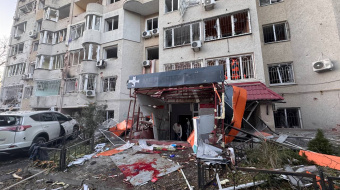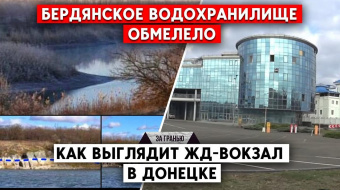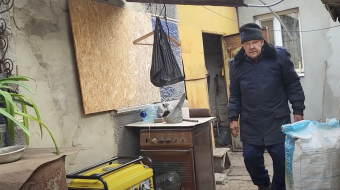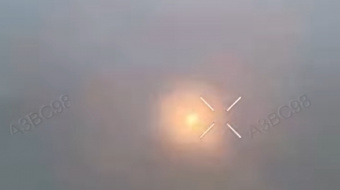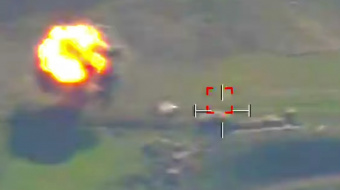Will you be able to get home? Part 1
Will you be able to get home? Part 1
It costs from 150 to 500 hryvnyas to get from the new administrative centre of the Luhansk region to its former “capital”. However, the value for money of this trip cannot be explained logically.
1. Do not trust what you are told!
You dial a number you have seen in an adverstisement and a private carrier company promises that if you leave Siverodonetsk at 4.30 a.m., you will be in Luhansk by eleven o’clock or at twelve o’clock maximum, at least, by lunchtime for sure. The journey, though took us fifteen hours and a half. Either there was a rotation of servicemen or their number was reduced by law enforcement bodies, but the scheme when a bus driver could bribe the guards and it was possible for a bus to go through checkpoints on time did not work out any more. There is only one automobile way for the Luhansk residents to get to their homes which is via the Donetsk region. The neighbouring governor has been joking about it for a long time: “There are no checkpoints in the Luhansk region and they have no problems”, said Pavlo Zhebrivsky, head of Donetsk regional military and civil administration, in one of his interviews. We joined the queue nearly at the sign which marks Zaitseve administrative border. Those who have been on such trips will understand how far it is from the checkpoint itself. Those residents of the Donetsk regions who have some entrepreneur talents, have already launched their business there: there are kiosks with water, biscuits and pies along the road. Autocafes seduce travellers with odours coming out of their vans. “Riksas” on scooters bring ice creams in mini fridges from Bakhmut. The prices are two times higher that usual ones on the liberated territory. Still, the most important thing is that there are drinks and food. The situation with the toilet is much worse, the nearest one is about two kilometres away from the end of the queue of cars. During our first minutes in the queue we learn that passengers of the first one hundred and forty cars had to spent the night at the checkpoint. Having heard this, eight travelllers from our bus divided into aggressive pessimists and several optimists who were silently hoping for the best. No one actually wanted to imagine looking for the toilet in the middle of the night or sleeping on hard seats.
2. The majority of passengers are females.
Seniors who were travelling by our bus deserve a credit. One lady, a retired dentist, was entertaining us by retelling a book about Coco Chanel which she had read before. Another senior lady suggested discussing destinies of great women and she told us about Lilya Brik. An average passenger is about seventy years old. Forty-year-olds are nicknamed “boys” and “girls” here. Some people say that the majority of unemployed people are females, here the situation is the same. The majority of those who want to cross the demarcation line are females. It took us about twelve hours to get to the checkpoint. When we were approaching it, we paid attention to several hundred people who were sitting tiredly on concrete blocks. Those were people who had decided to save some money. There are variants when you go to Bakhmut by one bus, then change for a bus which goes between Bakhmut and Mayorsk, and then, another bus is waiting for them on the other side of the demarcation line. Such trips are two times cheaper but how long will you wait in the queue in the open air? And how tiring will it be? At least, volunteers from the Organization “Médicines sans Frontières” give out paper caps, can give first aid and find a necessary medicine.
Zaitseve checkpoint is good because passengers do not have to leave the bus during the customs inspection. The driver is showing our heavy bags (almost everyone is carrying tasty Ukrainian sausage, sweets, vegetables). Finally, the bus covers the last twenty-two kilometres of the Ukrainian territory. Still, there will be customs at the other end, and it means people will have to wait again. The “grey zone” between Ukrainian Mayorsk and “alien” Horlivka meets us with for rows of waiting vehicles and people rushing between them. A gas mask is hanging on the wall of a wooden toilet and it is more eloquent than any descriptions. The driver asks us: “Has it been long since you last were here? There are shellings every night.” The alphalt is covered with new shell craters. There are mine shelters made of concrete blocks and military binoculars around. There are just a couple of metres left till the same objects on the other side.
Halyna Tyschenko
New service "Explain Ukraine". This is a daily mailout of three articles which were written about the situation in the Donbas by Donbas journalists and translated into English. Honest vision of people who work in the field is unbiased and fresh which is crucial in the world which is full of desinformation and propaganda. We try to share this vision in out daily mailout. You can subscribe here.










